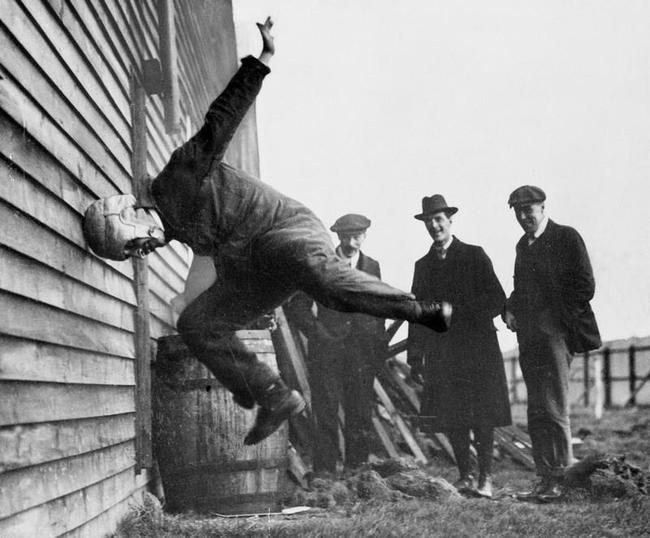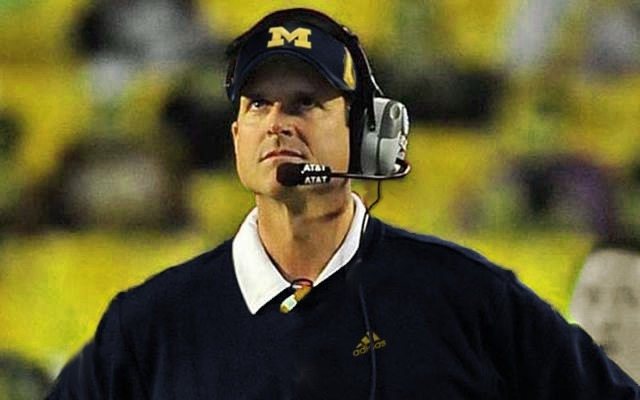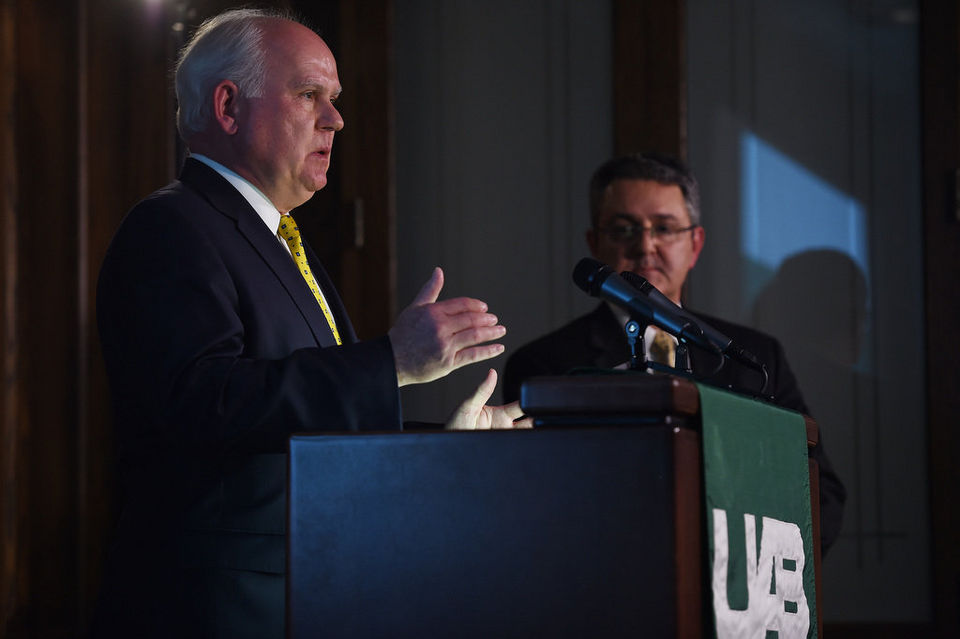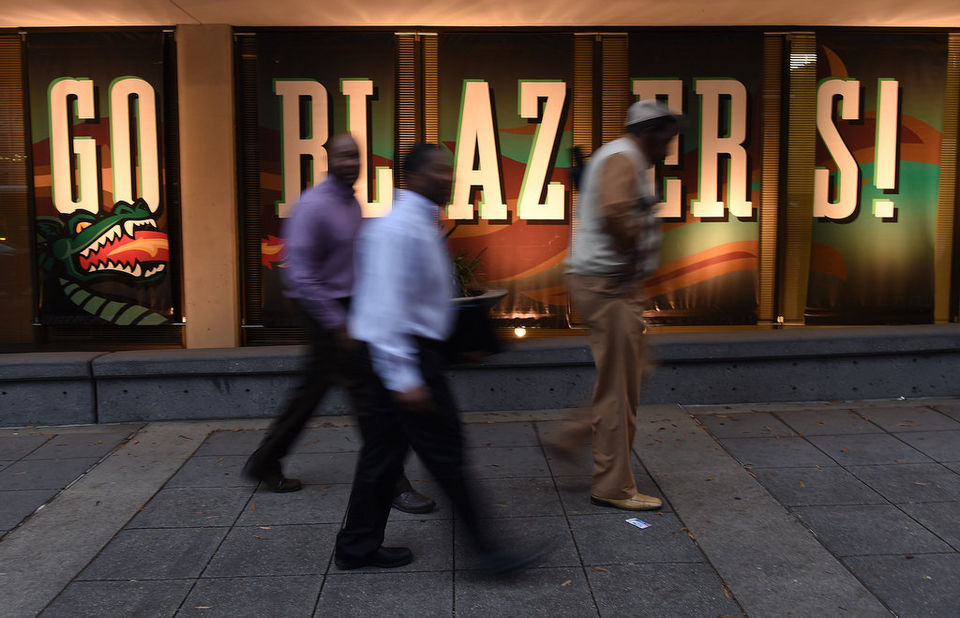Death Blow to Amateurism or Unprecedented Opportunity for Higher Education?
In an effort to quell the clamor for athletes to receive their “fair share” of the millions they generate, the NCAA recently approved a measure to give more autonomy to the five powerhouse conferences (Big Ten, SEC, Pac-12, ACC and Big 12), allowing them more flexibility to provide additional benefits to athletes. Some estimate that the added cost of keeping up with programs that will provide these benefits at $5million per year. This will undoubtedly increase the competitive distance between the “haves” and the “have nots” which, despite the shallow rhetoric from these conferences that this was about doing the “right thing” for their “student-athletes”, was the point all along. In an age of increasing financial pressure, why would schools like Alabama and Oregon want to share the enormous revenue bonanza from a college football playoff system with the likes of Ohio University and Arkansas State? Similar to the win at any cost culture that applies to the game on the field, when it comes to television dollars and finances, “Big-Time” athletic departments play to win.
Further, two ongoing court cases are likely to significantly shift the college athletic landscape. The O’Bannon case (named after former UCLA basketball star Ed O’Bannon) has opened the door for athletes to receive compensation for the use of their names, images and likenesses. The second, an anti-trust case winding it’s way through the legal system is challenging the current restriction against paying athletes. Commonly referred to as the Kessler case (after the lead lawyer Jeffrey Kessler), it could lead to an open market where athletes could field offers and sign with the highest bidder. And if that isn’t enough, in March, the Chicago district of the National Labor Relations Board ruled that Northwestern football players qualify as employees of the university and thus, can unionize.
While these changes can affect all sports, this is really about football.
Fans, pundits and the athletic establishment are fearful that these developments mark the death of college athletics’ amateurism model. Cries of hypocrisy, greed and deception have filled the airways and bylines of talk radio and newspapers nationwide with commentary focusing on the negative impacts on the traditions and “purity” of college athletics.
But why the angst? That horse left the barn years ago. These developments simply formalize the fact that, “Big-Time” football has evolved to where it’s fully professionalized and has virtually nothing to do with education. It’s business.
But rather than bemoan that fact, these developments not only provide an opportunity for a sizeable portion of universities to not only reconsider and recalibrate their relationship with athletics, but something far more important. In an age of increasing skepticism regarding the value and importance of higher education, they offer an unprecedented opportunity to provide significant leadership in reversing a cultural trend that has had an increasingly negative impact on our society.
Specifically, it is the fact that our country has lost perspective regarding the role of organized sport in our culture. We have come to glorify athletic accomplishment far more than academic achievement. And we, in higher education, have, in large part, been responsible for allowing this culture to evolve. Rather than fighting to maintain the academic and educational integrity of this, higher education’s most visible resource, we have instead, opted for passive resistance to the proliferation of the commercial values of the entertainment culture and the resultant win-at-all-cost, keep-up-with-the-Jones’ mentality it perpetuates. The result has been the grotesque distortion of educational priorities through the disproportionate resources and attention devoted to athletics.
Higher Education’s Leadership Role
From teaching, research and service to fostering economic development and being an agent of social change, higher education’s mission essentially remains what it has been for over 350 years. Specifically, that mission has been to serve the public will by helping to meet the many problems, needs and challenges that face society. And the effectiveness with which higher education continues to respond to those needs will define it in the future.
Given its’ leadership role, if we are ever going to begin the process of restoring a cultural balance regarding the proper relationship between sport and education, it is up to the higher education community to initiate it. Perhaps this is an unfair burden. After all, professional sports also bear some responsibility. Maybe so, but not nearly to the degree that we do. Our responsibility is greater because, in the case of the cultural subject matter of athletics, American higher education has failed in its public mission. We have not provided the necessary leadership in establishing a healthy societal attitude regarding athletics.
The fact is, what we do in our college athletic programs; the behaviors we condone, and the messages we send, filter down to all levels of sport. If our institutions of higher education tacitly endorse activities that undermine educational priorities and achievement in the name of athletic glory, it provides an example for all to emulate. In short, the public looks to higher education to provide educational leadership, including leadership regarding the role, importance, and purpose of sport in relation to education. And if there is any American institution that absolutely must demonstrate, with words and deeds, that athletic glory is not more important than academic excellence and educational achievement it is our colleges and universities.
The issue is balance. Somewhere along the line, our cultural consensus regarding the importance of athletic performance versus intellectual achievement has become grotesquely distorted. And the societal consequences of our loss of perspective are becoming too great. Specifically, as we struggle to meet the rapidly changing educational and economic demands of the twenty-first century, we can no longer celebrate a culture that promotes anti-intellectualism, undermines educational values, systematically creates “dumb jocks” and “scrambles” kids’ brains.
Given these realities, it is clear that athletic reform is no longer about the traditional fare of student-athlete welfare, academic integrity, and presidential control. Today, reform is about the cultural values we will pass on to our children and grandchildren. It is about ensuring that we prize and reinforce values such as intelligence, academic achievement and educational excellence over athletic prowess.
The fact is, there are significant problems within our nation’s system of organized sport that we in higher education are being looked to provide leadership in addressing. The question is whether we have the vision, but most important, the courage, to meet that responsibility.
Acknowledging the Professional Model
Traditionally, the promise of a quality education is at the core of the bargain struck between an athlete and the institution. The athlete provides performance so the university can fill stadiums, appear on television and provide entertainment for alumni, fans and friends. In exchange for those services, the university and its administrators and coaches provide the athlete a genuine opportunity to earn a meaningful degree and a well-balanced athletic, academic and social experience. This is the traditional “student-athlete” model.
In principle, that is fair deal. With the difference between the future earnings of a college graduate versus that of a high school graduate estimated at about $1.0 million, the chance to earn a well-balanced college educational, social and athletic experience ending with the receipt of a meaningful degree, is tremendously valuable. But the deal is only fair if both parties meet their end of the agreement.
Clearly, the “student-athletes” have kept their end of the bargain. Stadiums are full, television cameras are focused on the action and money is being generated. But equally clear is the fact that our universities have not kept their end of the bargain. As the money and visibility of football has exploded, the “student-athlete” model has become an embarrassing charade. It is no longer even an “athlete” model. It is a “professional athlete” model. This changes everything.
In the case of the Super Five institutions, because they have been relieved of having to maintain the pretense of the student-athlete experience and amateurism model, they are now free to pursue every dollar they can without trying to be anything other than a professional sports franchise. The athletes at those schools will receive more immediate, tangible benefits for the service they provide. And because many of these athletes are more interested in refining their skills to play professionally in the NFL than they are in a quality education, they will be able to do so without the “burden” of being a real student. As mentioned, these athletes are professionals already. And as professionals, it is in their best interest to secure as much compensation and material benefit as possible in the short window of opportunity that sports provides them to do so. That’s how professional athletics works. There is nothing wrong with that. With a limited window to leverage their unique skills it is in their best interests to do so because college and the opportunity to earn a degree will always be available after their playing days are over. It’s not when you earn your degree, but whether you earn it.
So, if the Super Five conference schools want to sponsor a professional sports franchise, so be it. If they are intent on defining themselves as major institutions of higher learning by spending $70 - 100 million per year sponsoring professional sports teams, have at it. But let’s not call it anything but what it is. It’s now crystal clear that their sponsorship of football has absolutely nothing to do with education. Rather, it’s now official! The athletic department is entertainment arm of the institution.
The Opportunity in Being “Left Behind”
In the case of those institutions that will be “left behind” because their already debt-ridden athletic departments will likely not be able to afford the increased expense that will be required to remain barely competitive, these developments represent an opportunity to achieve the most sweeping athletic reform in the in the history of American higher education. And the schools and athletes at these schools stand to benefit the greatest. How can that be when these are the schools that are being “left behind”?
Simply put, when you are trapped in a never ending, ultra-competitive and expensive rat race, that yields increasingly fewer real institutional educational and student academic benefits, being left behind isn’t something to be lamented. It is an opportunity that should be embraced.
Over time, competitive and financial realities change. A school that refuses to recognize those changing realities risks damage to its ability to fully meet its institutional mission. Expecting academic institutions to continue to fall on a financial sword for athletics in the name of alumni ego and a national profile based on sports is quite frankly, irresponsible.
Schools such as Kent State and Louisiana Tech must accept the obvious reality that there will never be a day where they can consistently compete on anything that even resembles a level playing field with the likes of Texas and Ohio State. These schools operate in different universes. And the difference is only going to become more pronounced. Like a smart poker player who recognizes when to “fold’em”, these developments provide an excellent opportunity to gracefully exit a game that no longer makes sense.
Rather than bemoan the financial and competitive realities, institutional leaders at these schools must garner the courage and resolve to aggressively pursue the opportunity these changes present to provide the necessary “cover” to gracefully exit Big-Time football. Thus, the challenge for trustees, state legislators, college presidents, and senior administrators is to exhibit the vision and courage to provide the necessary leadership to honestly assess athletics’ place on campus and to stop the charade of trying to keep up with the Jones’s. These changes provide an unprecedented opportunity to exert educational leadership, which has been sorely lacking when it comes to the role that Big –Time football should play in our educational system, by having the courage to say, in the case of athletics, bigger and more commercial, is not necessarily better. If positioned artfully, higher education leaders could send a strong, and much needed message to our populace that as much as we love athletics, it is far more important that we love and value education more.
UAB a Model?
The University of Alabama, Birmingham, for example, has provided itself such an opportunity with its recent decision to discontinue its football program. While some in the UAB community have expressed concern with the process through which this decision was made to a point where the university is reviewing it. Let’s hope that clearer heads prevail as this decision was clearly in the best, long-term interest in what is, above all else, an academic institution. UAB’s thinking should be applauded as an example of not only intelligent, strategic, long-term planning in recognizing and responding to, a rapidly changing financial and competitive environment, but also for the courageous leadership required in making such a decision.
UAB’s approach is wise and strategic because at a time when American higher education is facing increasingly daunting challenges under increasingly difficult financial circumstances, it is pure folly to continue to shovel enormous amounts of money down the bottomless pit of football while cutting other academic departments. We live in a world of increased standards for providing students an education worthy of the twenty-first century. This, against a backdrop of declining resources and skyrocketing costs. And because the economic currency of the future will be brains and not brawn, our country needs renewed commitment to academic excellence rather than larger, more expensive entertainment options. The benefit of providing alumni the occasional bragging rights opportunity at the office water cooler is simply not enough to justify enormous athletic department deficits.
If higher education leaders in general, and the educational decision makers at these institutions in particular, are smart, they will, like UAB, take advantage of the opportunity to distinguish themselves and their institutions as being able to recognize changing times and challenges and being able to courageously and strategically respond to those challenges. That is leadership. This is a rare and unique national teaching moment. And in a culture where the relationship between sport and education has become grotesquely skewed, that is by no means, a trivial matter.
But here’s the larger issue. If a university is dependant on defining itself as a major institution of higher education based on how “big time” its’ football program is, then it’s no longer in the education business. That school is in the entertainment business. And given the challenges we are facing as a nation and society and higher education’s traditional role in providing leadership in facing those challenges, we need as many as possible of our institutions of higher education in the education business.
These developments may be exactly the catalyst necessary for a significant reform of the role of athletics in our nation’s system of higher education as they provide a tremendous opportunity for 50 or 60 schools that are in the same competitive and financial boat as UAB, to rethink and realign their athletic programs to where they truly function as they were intended – as an auxiliary enterprise that contributes to the mission of their sponsoring institution in an educationally responsible fashion.
So rather than condemning what should be accepted as the natural progression of the big business, dog-eat-dog model of college football, we should be pushing and challenging leaders at these institutions to follow UAB’s lead by taking advantage of a tremendous opportunity to achieve significant athletic department reform. Our efforts should be geared towards highlighting this opportunity and providing encouragement and the necessary cover to institutional leaders to help them exit gracefully out of the Big-Time Football rat race.
That process starts by having the courage to reject the false argument about athletic boosters who will quit writing checks to the university if the school de-emphasizes football. While there may indeed be a few, there will also be others who will applaud the university’s courage and strategic vision in walking away from the rat race and respond by writing checks they wouldn’t have written in the past. In fact, some research suggests that those who donate the most to universities believe that university spending on athletics should be a very low priority. The fact is, these institutions will survive and thrive with football being played at a scaled back level or, without it at all.
In the end, scaling back the football program will have little impact on its effectiveness in contributing to institutional advancement. Most people who attend games at these school do so not because of the quality of the game, but rather because they are alumni, family members of players or general fans of the institution. The university will continue to be able to use a far less expensive version of football for a backdrop for alumni weekends. The hard truth is that fans wanting to experience big-time college football will tune their televisions or buy a ticket to see Florida State play Penn State rather than Ball State play Kent State. And even if de-emphasizing the program causes a slight drop in attendance, that lost revenue will be far less than the millions in incremental costs necessary for a football program to continue to compete (hardly!) in the “Big Time.”
And as for the athletes at those “Not So Super” conference schools? Will they be “left behind” in that their schools won’t provide the types of additional financial support that is awarded to athletes in the Super Five Conferences? Absolutely not! In the long run, they will be better off because, in exiting the big-time football rat race, their schools will be in a position to restructure and reposition their athletic program as one that can offer a young person a true student-athlete experience, one that will prepare them for a lifetime of success as opposed to “success” in an activity that for 99% of them, will cease the day their eligibility expires.
Rather than agonizing over giving increased financial autonomy to the “Super Five” conferences as further evidence of a system that is out of control and corrupt, perhaps we should recognize it as an unprecedented opportunity for significant reform at many institutions. Yes, the arms race will continue unabated at those schools, athletes will continue to be exploited and football priorities will continue to undermine institutional integrity and academic mission. But that is old news as these trends and practices have been going on for years.
But for leaders of almost half of the remaining FBS (Football Bowl Subdivision) schools, this is a golden opportunity to address a problem that has become glaringly obvious. Specifically, Big-Time football no longer makes sense. If they, like UAB, embrace the vision and summon the courage to do so, they will have an opportunity to do something that most educational leaders never get: the ability to restructure their athletic program in a way that will enable it to fit more comfortably within the educational mission of their institution. That will be a far more lasting and significant legacy than being remembered as yet another institutional leader more concerned with athletic pride and institutional ego than educational excellence.
Now, THAT would be “Big Time.”






